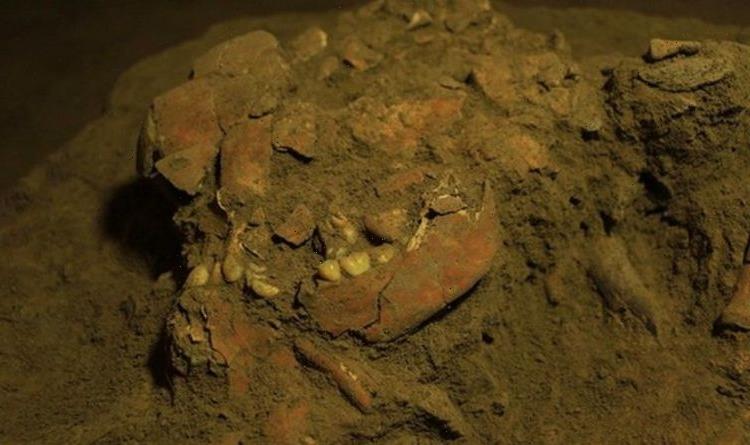Global warming: Expert warns in 2019 that sea levels could rise
We use your sign-up to provide content in ways you’ve consented to and to improve our understanding of you. This may include adverts from us and 3rd parties based on our understanding. You can unsubscribe at any time. More info
The groundbreaking discovery challenges previous assumptions about the so-called Paleocene-Eocene Thermal Maximum (PETM) – one of the most extreme periods of global warming in Earth’s history. Until now, scientists have believed the PETM was exacerbated by intense volcanic activity dumping large amounts of carbon dioxide (CO2) in the atmosphere. But the trigger behind this 150-year-long period has remained a mystery.
New research carried out at the University of Exeter has now identified heightened mercury levels in rock samples collected from the North Sea.
The mercury, which has been detected just before the PETM began, may have been caused by extensive volcanic activity.
More importantly, the study has identified a steep decline in mercury levels in the early stages of the PETM.
The discovery indicates the collapse of at least one carbon reservoir.


Carbon reservoirs are natural storages of the greenhouse gas, that include large forests, ocean life and even the atmosphere and layers in the Earth’s crust.
The study suggests the presence of so-called “tipping points” in the Earth’s System that can release large amounts of CO2 into the atmosphere, driving the greenhouse effect and temperatures upwards.
The emission of CO2 through the burning of fossil fuels is one of the leading causes of climate change today.
The study’s findings could give scientists a clue how climate change will affect the Earth in the years to come.
Dr Sev Kender from Exeter, who co-authored the study, said: “Greenhouse gasses such as CO2 methane were released to the atmosphere at the start of the PETM in just a few thousand years.
Extinction Rebellion: Guests clash over climate change protests
“We wanted to test the hypothesis that this unprecedented greenhouse gas release was triggered by large volcanic eruptions.
“As volcanoes also release large quantities of mercury, we measured the mercury and carbon in the sediment cores to detect any ancient volcanism.
“The surprise was that we didn’t find a simple relationship of increased volcanism during the greenhouse gas release.”
The researchers found volcanism only occurred in the initial stages of the PETM, suggesting the greenhouse gases must have come from another source.


The PETM is considered to be one of the fastest cases of global warming in Earth’s history.
The period occurred around the time icy Greenland drifted away from continental Europe.
In their new study, the scientists analysed sediment cores drilled out of the North Sea.
Dr Kender said: “We were able to carry out this research as we have been working on exceptionally well preserved new core material with collaborators from the Geological Survey of Denmark and Greenland.
“The excellent preservation allowed detailed detection of both the carbon released to the atmosphere and the mercury.
“As the North Sea is close to the region of volcanism thought to have triggered the PETM, these cores were in an ideal position to detect the signals.”
According to the expert, the volcanism that led to the period of warming “intruded sills producing thousands of hydrothermal vents on a scale far beyond anything seen today”.
The additional sources of greenhouse gasses may have come from the melting permafrost and seafloor methane.
The findings were published in the journal Nature Communications, and involved scientists from the British Geological Survey, the University of Oxford, Herriot-Watt University and the University of California at Riverside.
Source: Read Full Article


